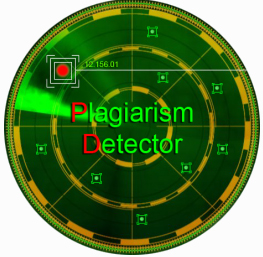A MULTICRITERIA INDEX USING NEURAL NETWORK TO EVALUATE THE POTENTIAL LANDS OF MAIZE
Abstract
The criteria for planting maize should be consistent with sensible and ecological criteria to determine the potential lands. However, there is still a lack of proven methodology for this evaluation. The purpose of this analysis was to determine the parameters that affect the multi-criteria decision of maize, with the aim of a new method on the land suitability analysis. The land suitability analysis proposed was based on GIS-analysis and management parameters such as distance from roads, rivers, slope, LULC, elevation, soil type, NDVI, SAVI, rainfall, and temperature. We have found a sample of 4590 maize in Tuban, East Java, Indonesia. Based on the above criteria, maize has been classified into four groups according to FAO. Moreover, we analyzed was done using Neural Network. Results showed that the integrated AHP with Neural Network to evaluate the lands inferred that 66.7 percent of the study area was classified as highly suitable, 30.2 percent were moderately suitable, and 3 percent were marginally suitable for Maize Cultivation in Tuban Regency. The approach presented in this analysis can be extended in this analysis can be extended to other maize areas also other crops as a decision-making system.
Full Text:
PDFReferences
D. P. Roberts and A. K. Mattoo, “Sustainable agriculture—Enhancing environmental benefits, food nutritional quality and building crop resilience to abiotic and biotic stresses,” Agric., vol. 8, no. 1, 2018, doi: 10.3390/agriculture8010008
R. L. Naylor, D. S. Battisti, D. J. Vimont, W. P. Falcon, and M. B. Burke, “Assessing risks of climate variability and climate change for Indonesian rice agriculture,” Proc. Natl. Acad. Sci. U. S. A., vol. 104, no. 19, pp. 7752–7757, 2007, doi: 10.1073/pnas.0701825104.
A. Vitali, C. Urbinati, P. J. Weisberg, A. K. Urza, and M. Garbarino, “Effects of natural and anthropogenic drivers on land-cover change and treeline dynamics in the Apennines (Italy),” J. Veg. Sci., vol. 29, no. 2, pp. 189–199, 2018, doi: 10.1111/jvs.12598.
M. Caselli, L. Trizio, G. De Gennaro, and P. Ielpo, “A simple feedforward neural network for the PM10 forecasting: Comparison with a radial basis function network and a multivariate linear regression model,” Water. Air. Soil Pollut., vol. 201, no. 1– 4, pp. 365–377, 2009, doi: 10.1007/s11270-008-9950-2.
O. M. Adisa et al., “Application of artificial neural network for predicting maize production in South Africa,” Sustain., vol. 11, no. 4, 2019, doi: 10.3390/su11041145.
T. J. Klopfenstein, G. E. Erickson, and L. L. Berger, “Maize is a critically important source of food, feed, energy and forage in the USA,” F. Crop. Res., vol. 153, pp. 5– 11, 2013, doi: 10.1016/j.fcr.2012.11.006.
D. Žížala, T. Zádorová, and J. Kapička, “Assessment of soil degradation by erosion based on analysis of soil properties using aerial hyperspectral images and ancillary data, Czech Republic,” Remote Sens., vol. 9, no. 1, 2017, doi: 10.3390/rs9010028.
M. Blanco et al., “Climate change impacts on EU agriculture: A regionalized perspective taking into account market-driven adjustments,” Agric. Syst., vol. 156, no. April 2016, pp. 52–66, 2017, doi: 10.1016/j.agsy.2017.05.013.
Y. Ostovari, A. Honarbakhsh, H. Sangoony, F. Zolfaghari, K. Maleki, and B. Ingram, “GIS and multi-criteria decision-making analysis assessment of land suitability for rapeseed farming in calcareous soils of semi-arid regions,” Ecol. Indic., vol. 103, no. February, pp. 479–487, 2019, doi: 10.1016/j.ecolind.2019.04.051.
N. Nurda, R. Noguchi, and T. Ahamed, Forest productivity and carbon stock analysis from vegetation phenological indices using satellite remote sensing in Indonesia, vol. 4, no. 3. Springer Singapore, 2020.
N. Nurda, R. Noguchi, and T. Ahamed, “Change detection and land suitability analysis for extension of potential forest areas in Indonesia using satellite remote sensing and GIS,” Forests, vol. 11, no. 4, pp. 1–22, 2020, doi: 10.3390/F11040398.
M. I. Habibie, T. Ahamed, and R. Noguchi, “Deep Learning Algorithms to determine Drought prone Areas Using Remote Sensing and GIS,” 2020 IEEE Asia-Pacific Conf. Geosci. Electron. Remote Sens. Technol., doi: 10.1109/AGERS51788.2020.9452752.
M. I. Habibie, R. Noguchi, S. Matsushita, and T. Ahamed, “Development of micro- level classifiers from land suitability analysis for drought-prone areas in Indonesia,” Remote Sens. Appl. Soc. Environ., vol. 20, no. June, p. 100421, 2020, doi: 10.1016/j.rsase.2020.100421.
M. I. Habibie, R. Noguchi, M. Shusuke, and T. Ahamed, Land suitability analysis for maize production in Indonesia using satellite remote sensing and GIS-based
DOI: https://doi.org/10.33365/jti.v16i2.1873
Refbacks
- There are currently no refbacks.
Copyright (c) 2022 Muhammad Iqbal Habibie, Nety Nurda

This work is licensed under a Creative Commons Attribution-ShareAlike 4.0 International License.
JURNAL TEKNOINFO
Published by Universitas Teknokrat Indonesia
Organized by Prodi S1 Informatika FTIK Universitas Teknokrat Indonesia
W: http://ejurnal.teknokrat.ac.id/index.php/teknoinfo/index
E : teknoinfo@teknokrat.ac.id.
Jl. Zainal Abidin Pagaralam, No.9-11, Labuhan Ratu, Bandarlampung

This work is licensed under a Creative Commons Attribution-ShareAlike 4.0 International License.
Jumlah Pengunjung : View Teknoinfo StatsCounter



















